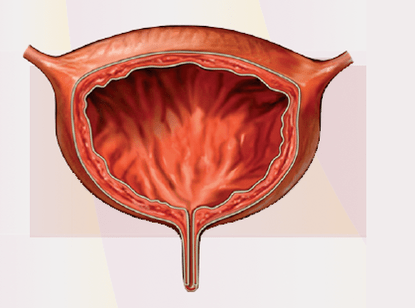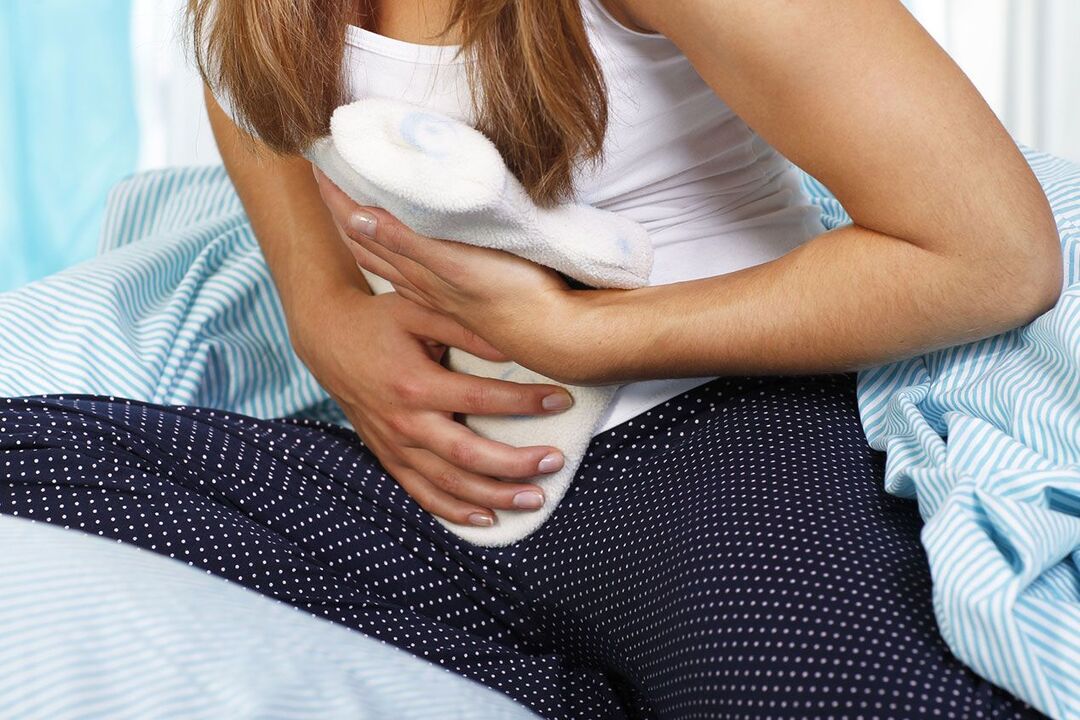Cystitis is inflammation of the bladder walls. It is characterized by fast (every 15-20 minutes), painful sharp urination in small parts, sometimes with a mixture of blood, subfabil body temperature. Crossing the disease into a chronic form, infection adhesion and development of the inflammatory process in the kidneys, and discounts - in the urethra are possible. In diagnosing cystitis, urine analysis and bladder ultrasound results help the urologist. To determine the etiology of the cystitis, bacterial planting of urine and staining from the urethra is performed. Cystitis therapy mainly implies an effective effect of medication on the infectious agents that caused it.
General information
Cystitis is inflammation of the bladder mucosa. In most cases, cystitis has an infectious nature. The disease is widespread, affects representatives of weak and stronger sex, but is more common in women due to some anatomical features of the female body structure.
Women's urethra (urethra) wider and shorter than male, so it is easier for pathogens to penetrate the bladder. This determines the most common cystitis in women. Most often, women of childbirth are cystitis. There are frequent cases when cystitis develops in a woman repeatedly, significantly exacerbating the quality of her life.
As a rule, the cystitis is caused by representatives of the pathogenic stick with pathogenic condition-a bowel stick, streptococci, staphylococci, etc. Sometimes cystitis occurs due to infection with pathogens of sexually transmitted-transmitted-mycoplasma diseases and ureaplasma.

Symptoms of cystitis
The most characteristic symptom of cystitis is painful urination, accompanied by remaining sensations of burning and friction. Moreover, patients with cystitis are disturbed by the pain in the lower abdomen and a feeling of incomplete bladder emptying. Sometimes with cystitis, urinary incontinence develops, which appears with a strong desire to urinate.
Urine with cystitis can be made with mud or take a reddish coloring due to the impurities of red blood cells. The temperature sometimes rises to 37. 5 degrees. Increased temperature with cystitis can signal possible kidney disease, so in such cases it is urgent to apply for qualified medical care.
The predominance of cystitis
Acute cystitis is one of the most common urological diseases. Most often, uncomplicated cystitis is found, in which germs only affect the mucous membrane, without affecting the submucosal layer. According to studies in the field of urology, acute cystitis each year drops from 26 to 36 million people. At the same time, the incidence levels among women are 500-700 episodes per 1000, while among men aged 21 to 50, a similar indicator is only 6-8 cases per 1000.
Girls suffer from cystitis three times more often than boys. The disease is extremely rare in newborns and children under the age of 1 or more common among children aged 1-3 and 13-15 years. Most often, cystitis occurs in children aged 4 to 12 years.
Chronic cystitis also belongs to the number of widespread urological diseases. According to the research, chronic cystitis suffers from 11 to 21% of the population. A significant data distribution is due to a different approach to determining chronic cystitis. Some studies study that the diagnosis of chronic cystitis should be made if the frequency of irritation is twice a year or more, other irritations do not specify.
Cystitis in the summer
It is unlikely to have a woman who wants the pleasure of warm summer days to be in the shadows of such an unpleasant disease as cystitis. Meanwhile, during the summer, especially if a woman leaves home and falls into an unusual environment, there are many reasons for the cystitis.
The most common causes of cystitis in the warm season:
An additional risk factor for cystitis development is sometimes an increase in sexual activity against the backdrop of listed adverse conditions for the female body.
If your vacation, however, shaded the appearance of such an unpleasant disease as cystitis, you should urgently contact a urologist. To clarify the diagnosis, it will be necessary to pass an ultrasound of the bladder and get urine analysis. Modern antibacterial drugs effectively affect cystitis, can accelerate recovery and prevent the passage of acute chronic cystitis.
Unlike previous generations that affect the whole body, modern antibiotics used to treat cystitis act selectively in the inflamed bladder tissue, virtually without affecting other organs and systems. The concentration of medicines reaches maximum values only in the urine and inflamed bladder mucosa. This can minimize the toxicological load on the body in the treatment of cystitis and increase the effectiveness of the medication.
Photoxicity is an unpleasant side effect caused by many medicines for the treatment of cystitis. It manifests itself in increased sensitivity to sunlight, appearance of redness and burns even when exposed to low intensity ultraviolet rays. It develops due to the presence of substances in medicines with the properties of photosensitizers and photoreactive. Such substances lead to the appearance of a large number of free radicals in the skin, which, in turn, cause the destruction of skin cells, inflammation and burns.
Cystitis during pregnancy
Cystitis can develop in any gestation. The probability of cystitis development increases due to the displacement of the internal organs, which are suppressed by an increasing uterus, changes in the hormonal background and hemodynamics. The impact of these factors causes incomplete bladder emptying, and urine residues in the bladder serve as a favorable environment for the development of bacteria.
In the first signs of cystitis, a pregnant woman should undergo a tremendous consultation of a gynecologist who performs the pregnancy and tell him about the symptoms that have appeared. If necessary, the doctor will give the patient a direction of urologist.
Children's cystitis
Cystitis can develop in a child of any age, however, for old school and school-age girls, the risk of disease increases by 5-6 times. The main causes of frequent cystitis development in children in this group are a number of factors. Girls' ovaries have not yet begun to produce estrogens, the properties of mucous barriers are low, and the wide and short urethra allows pathogenic microorganisms to be inserted into the bladder cavity.
The probability of developing cystitis increases in the case of other diseases due to a decrease in immunity and the formation of favorable conditions for the reproduction of pathogenic germs in the urethra. The main way to prevent cystitis in girls is to carefully observe hygiene rules.

Causes of cystitis
In 70-95% of patients suffering from acute cystitis, the cause of the disease becomes an EATHALLALBALL stick, in 5-20% of patients, staphylococci is found, and in the rest, pro or klebsell acts as a pathogen. Typically, the cystitis is caused by representatives of the conditional pathogenic flora. With the development of cystitis due to instrumental or surgical interventions, gram -negative bacteria often become the cause of the disease. Studies confirm that cystitis pathogens can be not only bacteria but also viruses, mycoplasms, trichomonas, chlamydia and various fungi.
The broad prevalence of cystitis in women is due to the low length and wide gap of the urethra, and its location in relation to other organs. Women's urethra, unlike the male, is close to the anus. The anatomical features and topography of the female body contribute to the penetration of pathogens into the urethra, their migration into the bladder and the development of cystitis.
In men, cystitis rarely develops. The reason for the appearance of cystitis in men usually becomes inflammation of the urethra, prostate gland, testicular supplements and seed bubbles. Sometimes urethra infection occurs due to bladder catheterization in women and men.
Cystitis risk increases during bladder catheterization in men suffering from prostate adenoma, one of the symptoms of which is a constant delay in the urine. The risk of developing cystitis also increases with the introduction of a pregnant woman's catheter or recently gave birth to a woman, which is due to a decrease in the tone of the urinary tract.
Treatment of cystitis
Quick cure of cystitis and complete restoration of the bladder mucosa is possible with timely onset of treatment and the use of medication with sufficient effectiveness. It should be noted that the chances of completely getting rid of cystitis with timely diagnosis and the use of medicines that detectively in the pathogens of infection. Later, the onset of treatment and the prescription of medicines that eliminate only cystitis symptoms, without affecting the pathogenic environment, can lead to the transition of acute cystitis to chronic.
The main task facing the doctor who treats cystitis is the destruction of pathogenic microorganisms that penetrated the bladder and caused inflammation of the mucosa. The choice of drugs for antibacterial cystitis therapy is determined by parameters such as the duration of the disease and the severity of the symptoms. Moreover, when choosing medication, possible side effects, the absorption of the medicine, the method and the degree of secretion, the presence of concomitant diseases, etc.
The effectiveness of the drug in the treatment of cystitis is determined by the ability of this drug to affect certain microorganisms. It should be remembered that pathogenic bacteria fit and become insensitive to antibiotics. Over time, the main causative agent of the cystitis (E. coli) has become resistant to these medicines. Moreover, the medicines for the treatment of cystitis, in relation to the previous generation of antibiotics, had a very high level of toxicity and caused various side effects.
When choosing a medicine for the treatment of cystitis, the cost of treatment should be taken into account, which is determined not only by the cost of a tablet but also by the true effectiveness of the antibiotic, the duration of intake and the potential risk to the patient's health. Today, there are medicines available for the treatment of cystitis, selectively affecting the pathogens of the disease. Once you are in the body, the medicine is focused on the bladder, which allows you to increase its effectiveness. Moreover, the use of the latest generation antibiotics ensures a decrease in cystitis treatment, reduces the chance of side effects and reduces the risk for the patient's body.
In the treatment of cystitis, fatty and spicy foods should be excluded from the diet, increase fluid intake and avoid hypothermia. A warm heat pillow located in the lower abdomen helps in the cystitis. Complex cystitis treatment in the use of ionoporesis, UHF or inductant is possible. We must not forget that in the presence of some gynecological diseases, physiotization and thermal procedures are contraindicated.
























